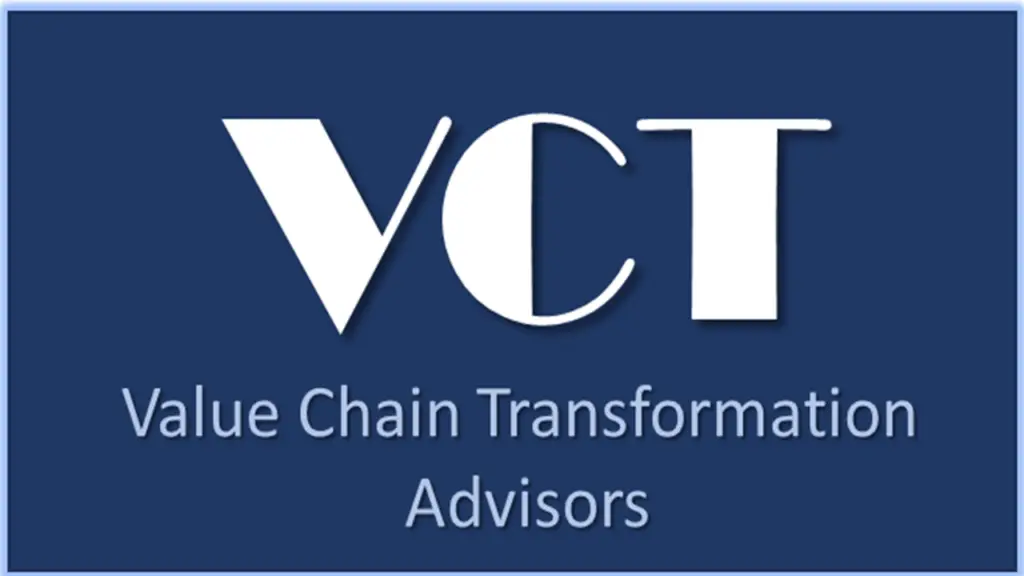Demand shifts keep on coming. From the digital-first expectations of younger consumers to the increasing desirability of sustainable products, consumers’ choices may be confusing for anyone trying to predict them. To stay ahead in the supply chain, it’s essential to understand demand patterns.
Yet most businesses struggle to recognize those patterns. In the U.S., for example, a 2023 analysis found retailers were currently stuck with about $740 billion in unsold inventory due to failed predictions.
With GAINS, you can uncover demand patterns in supply chain management to help you address disruptive shifts. It goes beyond traditional forecasts to identify recurrent patterns and shifts in demand, so you can plan with precision instead of reacting too late.
What Are Demand Patterns in Supply Chain Management?
Demand patterns are regular shifts in demand for a product or service over time. Usually, they stem from factors such as seasonality, trends, economic cycles, promotions and events, or external disruptions.
Every demand pattern helps your business anticipate how the market might perform. Understanding them will help you adapt your supply chain operations to real customer behavior and prevent processes from falling out of sync with demand.
Demand Pattern vs Demand Forecasting
You shouldn’t confuse demand patterns with demand forecasting. Forecasting gives you a point estimate of future demand. Demand patterns instead explain the recurring behaviors that shape the forecast.
When you identify demand patterns first, you improve forecast accuracy to make predictions more reliable and actionable. In fact, a 2022 McKinsey report states that using tools that combine pattern recognition with forecasting can:
- Cut errors by 20% – 50%.
- Reduce lost sales and product unavailability by up to 65%.
- Lower warehousing costs by 5% – 10%.
- Cut admin costs by 25% – 40%.
Why Recognizing Demand Patterns Matters More Than Ever
Organizations today face shifting markets and tighter margins. Without understanding demand patterns, even the most advanced forecasts can miss the mark and cause overstocks or shortages.
Market Volatility
Markets today are more volatile than ever, with 73% of supply chain leaders saying they are working on dual sourcing and 63% on regionalization due to concerns about instability. Economic swings and sudden shifts in consumer behavior also make demand less predictable. Identifying the underlying demand patterns lets you align your forecasts and maintain optimal safety stock levels.
Rising Customer Expectations
Consumer expectations for value and convenience are causing them to make unexpected trade-offs. These choices can be confusing if you try forecasting what consumers will do next without understanding what drives them. When you uncover patterns, you can see the behaviors behind purchasing decisions and align your inventory and service levels with what customers actually value.
Cost Pressure
Every unit of wasted inventory or lost sale due to inaccurate demand forecasts adds pressure to profit margins. Demand patterns help align forecasts with reality, cutting the risk of costly mismatches.
The Main Types of Demand Patterns
While demand patterns shape your profitable replenishment planning, not all of them are the same. Recognizing the demand pattern you’re dealing with will help you plan better. Here are the most common types of demand patterns in supply chain management:
1. Base Demand
Base demand is steady, consistent demand from your regular customers under normal conditions, without any influence from special events or promotions. For example, a clothing retailer can count on ongoing sales of basic t-shirts. Even though the demand may rise or fall slightly with the seasons, it remains far more stable than highly seasonal items like winter coats.
2. Trend-Driven Demand
Trend-driven demand reflects a long-term increase or decrease in demand driven by shifts in customers’ behavior or market conditions. A gradual rise in demand for electric vehicles (EVs), for example, has influenced automotive companies to increase EV production and adjust inventory to meet shifting customer preferences.
3. Cyclical Demand
Cyclical demand rises and falls with economic or industry cycles. Consider construction equipment, for example. Sales often grow during economic expansions and slow during recessions, which impacts how manufacturers plan production and inventory.
4. Seasonal Demand
Demand following predictable highs and lows throughout the year is seasonal. For instance, retailers see spikes in sales of throw blankets and cocoa mix during colder months, while swimwear and pool gear are more popular during warmer seasons.
5. Promotional/Event-Driven Demand
Marketing and promotional events like limited-time offers and discounts drive promotional demand, which is usually a short-term spike. Smartphones selling out during Black Friday or iPhone orders surging during Apple product launch events show event-driven demand.
6. Intermittent/Lumpy Demand
Intermittent or lumpy demand involves irregular, unpredictable spikes from sudden needs. For example, industrial machinery spare parts are ordered sporadically, making inventory planning challenging.
7. Erratic/Random Demand
Erratic demand results from sudden, unforeseen disruptions such as natural disasters or global crises. For instance, panic buying of hand sanitizer at the start of the pandemic caused sudden spikes in demand.
How to Identify Demand Patterns in Real Data
To identify demand patterns, collect and analyze your data from common sources:
- Point-of-Sale (POS) data: Track the products your company sells. Record the time and quantities to spot recurring behaviors.
- Order history: Examine past orders from customers or distributors to uncover trends or seasonality.
- External signals: Monitor factors like economic indicators and competitor activity that may influence demand. Consider market trends that could shift customer behavior and demand patterns.
Instead of manually analyzing data from multiple sources, use a statistical analysis and visualization tool that integrates with each of your supply chain tech stacks to automatically pull the relevant data. The tool will then uncover demand patterns and offer recommendations for more accurate forecasting and effective demand shaping strategies.
Matching Each Pattern to the Right Strategy
Each demand pattern in supply chain management requires tailored forecasting and an inventory strategy to optimize performance. Here’s a quick table to help you apply the right approach to each demand pattern and keep your supply chain resilient.
| Demand Pattern | Forecasting Strategy | Inventory Strategy |
| Base Demand | Use standard forecasting to predict steady, recurring demand. | Maintain a specific minimum inventory level to meet the base demand. |
| Trend-Driven | Regularly update forecasts to reflect long-term growth or decline. | Adjust production and inventory levels to match emerging trends. |
| Cyclical | Consider economic or industrial cycles in your forecasts. | Scale inventory up during expected peaks and down during slower periods. |
| Seasonal | Plan forecast around known seasonal peaks and dips. | Use flexible safety stock strategies and pre-position inventory to handle fluctuations. |
| Promotional/Event-Driven | Create short-term forecasts for specific marketing campaigns or events. | Pre-stock inventory and coordinate closely with marketing to prevent stockouts. |
| Intermittent Demand | Apply Minimum/Maximum Inventory Optimization (MEIO) to manage irregular spikes. | Keep flexible stock levels to absorb unpredictable demand without overstocking. |
| Erratic/Random | Monitor real-time data and adjust the forecast rapidly. | Maintain buffer stock and adopt responsive supply chain practices to handle sudden demand changes. |
Real-World Scenarios That Bring Demand Patterns to Life
Uncovering demand patterns is no longer a buzzword. It has become an integral part of the modern supply chain, driving 90% of supply chain professionals to plan IT overhauls that speed up decision-making and allow autonomous planning. Here’s how demand plays out in real-world scenarios.
Grocers Use Base Demand to Restock Everyday Essentials
Grocery supply chains consistently sell staple products like beef or bread under normal conditions. According to Oracle, grocers analyze weekly sales data to establish the base demand and separate it from demand fluctuations on weekends or holidays, preventing overstocking and stockouts.
Trend-Driven Demand Guides Manufacturers Towards Sustainability Goals
Consumers are willing to spend an average of 9.7% more on sustainable products, even as the cost of living and inflation are concerns. This trend has led many manufacturers to scale production of eco-friendly products and revise sourcing practices to meet evolving customer expectations.
Seasonal Demand Helps Organizations Plan for Peak Periods
Beverage companies may see higher sales of cold drinks in summer, while heating equipment suppliers experience peaks in winter. To meet seasonal spikes without overstocking, these businesses analyze seasonal demand, which informs their safety stock strategies and pre-position inventory.
Promotional Patterns Help Fashion Retailers Anticipate Short-Term Spikes
Fashion retailers see surges in the promoted stock-keeping units (SKUs) during marketing promotions. For example, sales can spike if a trending clothing item gains attention through influencer posts or social media buzz. To meet the temporary demand, clothing retailers examine historical promotional demands and develop short-term forecasts.
Intermittent Demands Inform Industrial Firms’ Irregular Order Management
Industrial spare parts like specialized machines are ordered irregularly and in bulk. Supply chain teams respond by setting minimum and maximum inventory thresholds and monitoring usage patterns so that parts are available when needed without overstocking.
The Payoff: Smarter Forecasts and Leaner Inventory
Planning at the demand level lets you understand patterns behind customer purchase decisions. In addition to having better forecasts and leaner inventory, you can:
- Reduce unnecessary buffers without risking stockouts
- Improve service levels
- Optimize working capital
- Respond faster to demand shifts
- Allocate inventory across locations more efficiently
With the right inventory optimization platform, you’ll translate pattern insights into actionable decisions, resulting in a leaner, more agile supply chain that supports profitability and customer satisfaction.
How GAINS Helps Plan with Precision at the Pattern Level
Beyond traditional forecasting, GAINS analyzes demand at the SKU and pattern level. It identifies recurring behaviors and trends to help you optimize safety stock and refine demand shaping strategies. With its actionable insights, you can plan replenishment more accurately to ensure inventory is available when needed while avoiding overstocking.
Instead of reacting to demand shifts, you can anticipate them and forecast more accurately to align supply chain operations with actual demand. Request a demo today and learn how GAINS can help your business plan with precision.



